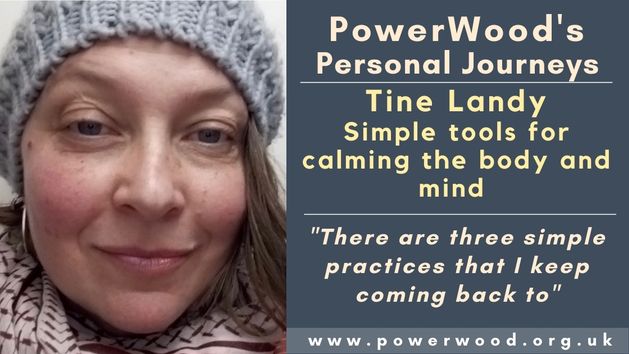
In a previous blogpost I have described how I have lived with Long Covid and some of the lessons I have learned throughout this period now stretching over 3,5 years.
Living with a chronic condition it’s common to keep looking for tools that can help strengthen and calm our minds and bodies.
While there are amazing tools available, there are three simple practices that I keep coming back to and in this blogpost I describe them and make available three recordings that I have made for myself, because I thought that others in our community might benefit from them.
Awareness Mantra
The first tool that I use regularly is the awareness mantra.
In the article linked to above, Simone says: ”The Awareness mantra is a simple tool that we can apply every time we become aware of an unhelpful thought or memory, we say the following to ourselves (if possible out loud):
“I’m proud and grateful to be aware that I have / had a not-helpful thought / flashback / sound / picture / film / smell / feeling etc. (choose the most appropriate word based on the type of memory) or action.”
For me it has been hard to stop and say the words either out loud or in my mind, so I recorded the very basic and short sentence, so all I need to do is to stop what I am doing and start the recording to follow my own instructions, which seems to help me use this tool more often.
My personal recording:
4-7-8 breathing
The second tool that I find hard to do just in my mind is the 4-7-8 breathing 4-7-8 Alarm – Simple Tool – PowerWood. This particular breathing pattern has a super calming effect so in order to use it more frequently I also use my own recording with specific counting followed by the power pose stretch.
My personal recording:
Body Scan Meditation
Thirdly I have recorded a very basic body scan meditation (scroll down for the transcript*), where the aim is to simply give attention to specific body parts when mentioned. I do love listening to various yoga nidras, which are meditations of varying lengths with various focus points, sometimes accompanied by music or sound healing. Being the very sensitive person I am, I sometimes find the extra sounds triggering or distracting, and sometimes the topic of the mediation makes me sad, if for instance you are asked to imagine that you are on a beautiful beach. Being very housebound, this particular suggestion doesn’t always promote calmness to my system, so I recorded this scan without background sound and without a story, just a focus on body attention.
-See the transcript of the Body Scan below*-
Please feel free to use these tools if you think they would help you, whether you live with a chronic illness or not.
© 2023 Tine Landy
*This is a little body scan for you to use when you need a little break in your day.
Either sit down or lay down and be as comfortable as you can
Take in a deep breath and blow out slowly
Take in another breath and slowly release this one
Now start by your feed
The aim of the little exercise is not to do anything in particular
Other than just pay attention to the body part that I mention
We are going to do both sides of the body at the same time
And simply just try and focus on how it feels in this particular body part
Just give the attention that is all
So, start by focusing on your feet
Feel the sole of your feet
All ten toes just give them attention
Just see how they feel
Move up to the top of the foot and to the ankles
How do your ankles feel
Don’t judge just notice how they feel
Then move along up to your shins, knees, your thighs, your hips
Remember to take a deep breath and just keep breathing slowly as we move through the body
After your hips now move your attention to your belly, to your solar plexus, to your chest
And now move to the top of your back, your lower back, and your buttocks
Slowly move your attention up to your shoulders, your upper arms
Your elbows, your lower arms, see how your hands are feeling
How are your palms of your hands feeling, all ten fingers, the top of your hands
And now move back up through your arms, wrist, lower arms, elbows, upper arms, and shoulders
And the whole area around the shoulders and the top of the back
Now move into your neck, to your ears, to the back of your head, to the top of your head
To your forehead, your eyes, how do your eyes feel, your nose, your cheekbones, your cheeks, your nose, your mouth, your chin, and the front of your neck
And now take a deep breath and see how the whole of your body feels in this moment
And try and take in a slow and steady breathing and thank yourself for doing this exercise
And giving yourself a break,
Have a good of the rest of your day
Help us to continue support all neurodiverse families and individuals
PowerWood offers to neurodiverse families understanding, simple tools and strategies that enable us to support ourselves and our children through emotional overwhelm. If you enjoy reading the articles please support PowerWood making all information available to all by becoming a PowerWood Community FreeBee or Friend member. Thank YOU!

